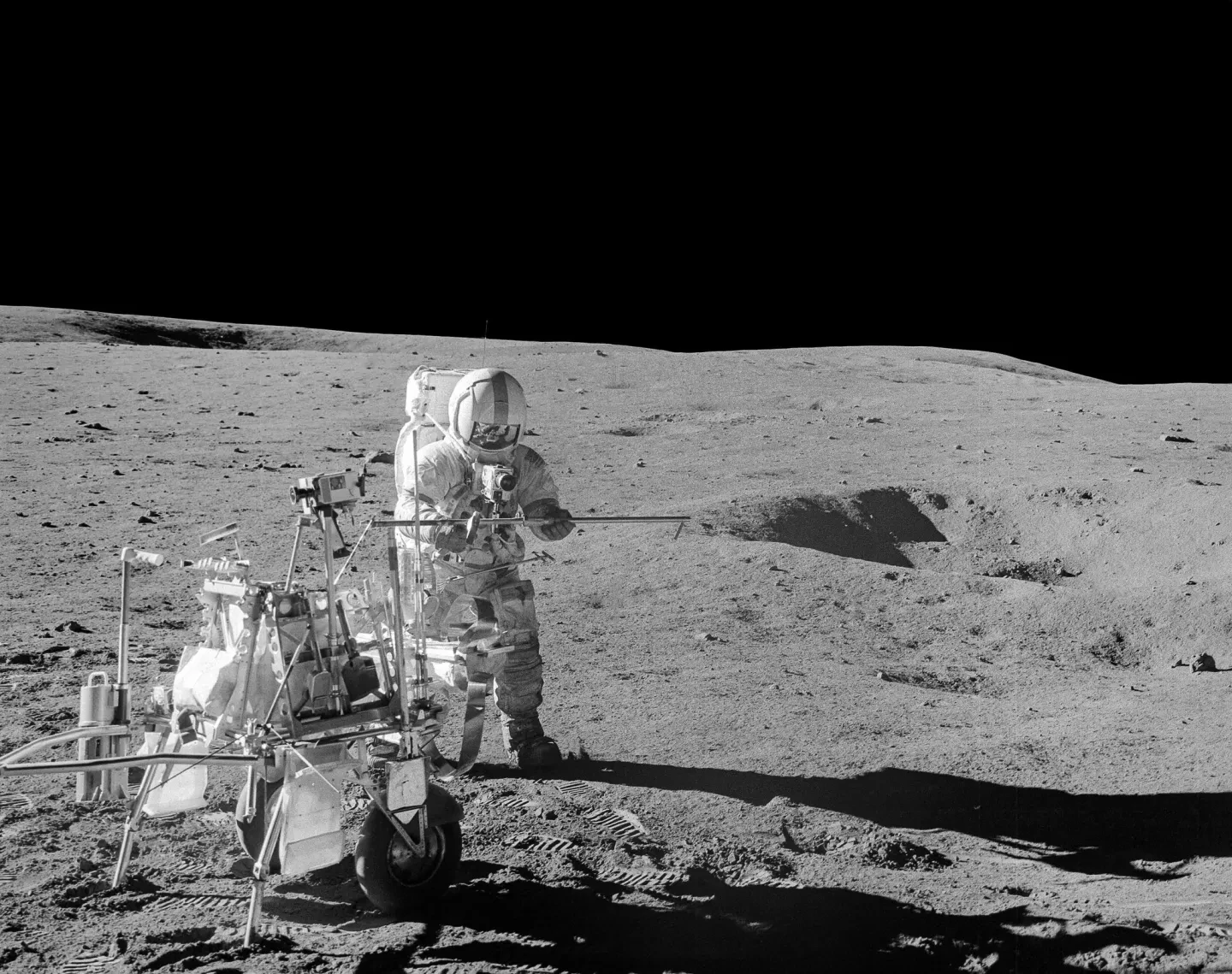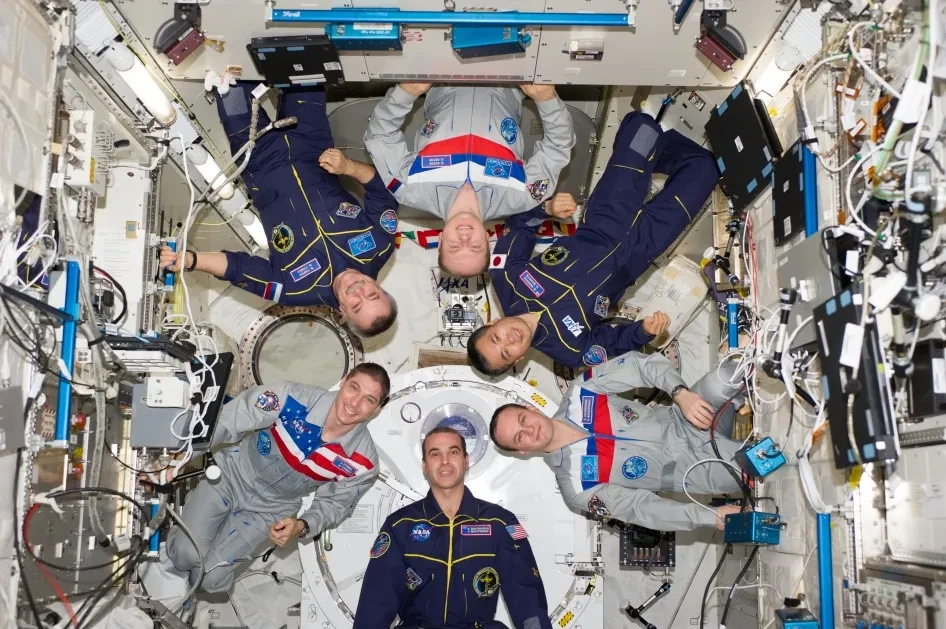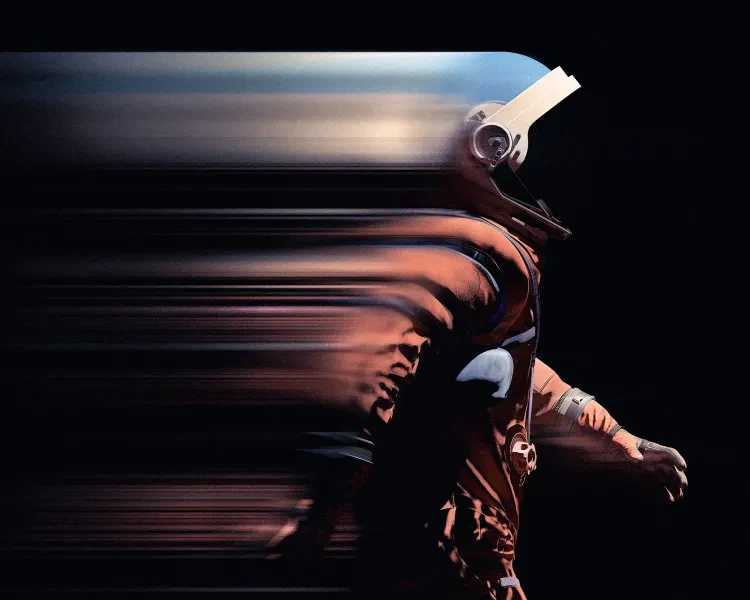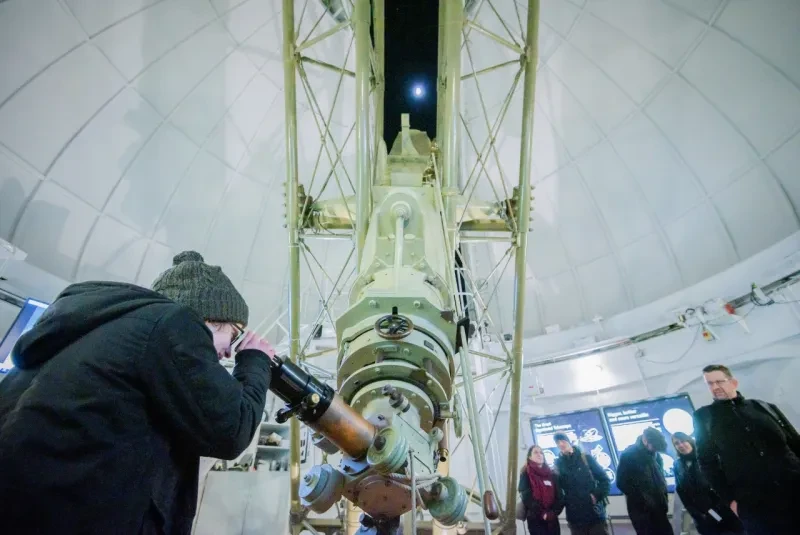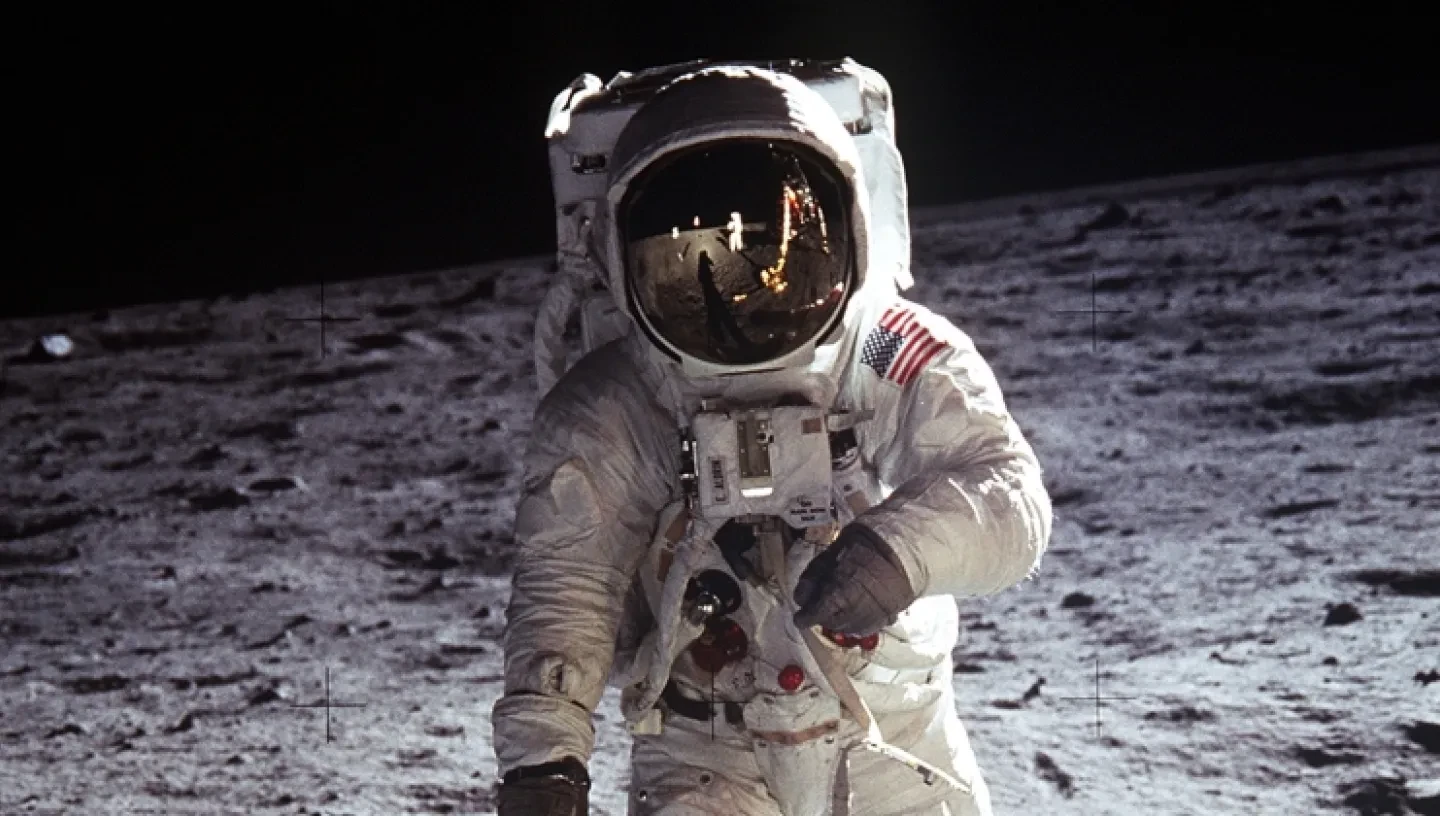
Explore and learn about the key events and achievements that shaped almost 20 years of competition between the United States and the Soviet Union.
If you want to find out about the 'new space race' between USA, China and Russia, click here.
What was the space race?
The space race was a 20th Century struggle between two nation-states, the Soviet Union (USSR) and the United States (US). The pursuit for both was the domination of space flight technologies. The competition began on 2 August 1955, when the Soviet Union responded to the US announcement of their similar intent to launch artificial satellites.
The space race has its origins in the nuclear arms race between the two nations following the Second World War. Both sides were aided by German missile technology and scientists from their missile programme. The technological advantages required for such power were seen as necessary for national security and political superiority. The space race produced groundbreaking efforts to launch artificial satellites; space probes of the Moon, Venus, and Mars, and human space voyages in low Earth orbit and lunar missions.
The space race between the United States (US) and the Soviet Union (USSR) was a remarkable time in history with many far-reaching achievements in science, space exploration, and technology. This timeline shows the twenty-year competition between the two nations.
Space race timeline
2 August 1955: The USSR responds to the US announcement that they intend to launch the first artificial satellite into space with a satellite of their own.
4 October 1957: The USSR successfully launches Sputnik 1, the first Earth-orbiting satellite in history.
3 November 1957: The USSR successfully launches Sputnik 2, carrying a dog named Laika into space. They become the first nation to successfully send a living organism into orbit.
31 January 1958: The US enter the space race by launching Explorer 1, the first US satellite to reach orbit. It carried experimental equipment that led to the discovery of the Van Allen radiation belt.
1 October 1958: The National Aeronautics and Space Administration (NASA) is created in the US, replacing the National Advisory Committee on Aeronautics (NACA).
18 December 1958: The US launch SCORE, the world's first communications satellite. It captured world attention by broadcasting a pre-recorded Christmas message from US President Dwight D. Eisenhower, becoming the first broadcast of a human voice from space.
2 January 1959: The USSR launches Luna 1, known as the first "cosmic rocket" as it accidentally escaped the orbit of the Moon due to the object having too much speed. Luna 1 becomes the first human-made object to leave the orbit of the Earth and orbit the sun instead.
2 August 1959: The US launches Explorer 6, the world's first weather satellite and obtains the first pictures of Earth from space.
12 September 1959: The USSR launches Luna 2 and accomplishes its mission of creating the first spacecraft to reach the surface of the Moon.
4 October 1959: The USSR launches Luna 3 and succeeds in their mission of sending an object into orbit around the Moon and photographing the far side of the Moon.
19 August 1960: Aboard the Soviet Union's Sputnik 5, the first animals (two dogs, Belka and Strelka) and a range of plants are returned alive from space.
31 January 1961: Ham, a US chimpanzee, becomes the first hominid (or great ape) in space and the first to successfully survive the landing.
12 April 1961: The Soviet Union achieve a clear triumph in the space race. Aboard the Vostok 1, Yuri Gagarin makes a single orbit around the Earth and becomes the first man to reach space. He remained in space for one hour and forty-eight minutes before landing in Saratov Oblast, west Russia.
5 May 1961: The US achieve the first pilot-controlled journey and first American in space with Alan Shepard aboard the Mercury-Redstone 3 (or Freedom 7) spacecraft. On this flight, Shepard did not orbit Earth. He flew 116 miles high. The flight lasted about 15 minutes.
16 June 1963: Valentina Tereshkova becomes the first civilian and first woman in space. She spends almost three days in space, orbiting the Earth 48 times aboard her spacecraft, Vostok 6.
18 March 1965: Alexei Leonov leaves his spacecraft, the Voskhod 2, in a specialized spacesuit and conducts a twelve-minute spacewalk, the first of its kind.
14 July 1965: The US satellite, Mariner 4, performs the first successful voyage to the planet Mars, returning the first close-up images of the Martian surface.
1967: This year proves the most deadly of the space race for both the US and Soviet Union. In January, American astronauts Ed White, Gus Grissom, and Roger Chaffee die when a fire ignited in their Apollo 1 capsule on the launch pad. Only a few months later the Soviet cosmonaut Vladimir Komarov is also killed when the parachute on his Soyuz 1 capsule fails to open on his reentry into Earth's atmosphere.
21 December 1968: US spacecraft Apollo 8 becomes the first human-crewed spacecraft to reach the Moon, orbit it, and successfully return to Earth.
20 July 1969: Neil Armstrong and later Edwin "Buzz" Aldrin become the first men to walk on the Moon while their crewmate Michael Collins continues to orbit the Moon aboard the Apollo 11. This secured a victory for America in the space race with a televised landing witnessed around the world by 723 million people.
11 April 1970: The US Apollo 13 mission is known as the first explosion onboard a spacecraft where the crew survived.
19 April 1971: The USSR launches the first space station. Parts of this spacecraft will become core segments of the International Space Station (ISS) almost thirty years later in November 2000.
1 August 1971: David Scott, commander of the Apollo 15 mission, becomes the first person to drive on the Moon. He's also remembered for paying tribute to the Soviet Union and US astronauts who died in the advancement of space exploration. When walking on the Moon, Scott places a plaque with a list of the dead. Alongside this, he leaves a small aluminium sculpture of an astronaut in a spacesuit, created by Belgian artist Paul Van Hoeydonck.
15 July 1975: With tensions between the US and USSR softening, the first cooperative Apollo-Soyuz mission is launched. With two separate flights, the Apollo and Soyuz spacecraft dock in space and the two commanders Tom Stafford and Alexei Leonov exchange the first international handshake. This act can be seen to symbolically end the space race, paving the way for future joint missions, such as the International Space Station and the Shuttle-Mir programme.
Never miss a shooting star
Sign up to our space newsletter for exclusive astronomy highlights, night sky guides and out-of-this-world events.
Space race facts
The first animals sent into space were fruit flies
These were carried aboard a Second World War V2 rocket on 20 February 1947. Find out more about the first animals in space
Dogs were sent into space
While the US often sent primates on test flights, the Soviet Union preferred to use dogs. They were seen to be more obedient, and Moscow stray dogs were reckoned to be more equipped to deal with the extreme conditions and potential hunger of space travel.
There is a solar powered satellite
The US Navy's Vanguard 1 was the first solar-powered satellite. Launched on 17 March 1958, it remains the oldest human-made probe in orbit. Although communication with the satellite is now lost, it will stay in space for many years to come.
Yuri Gargarin started a tradition
On the 12 April 1961, the first man in space, Yuri Gagarin asked the bus driver to stop on the route to the launchpad and urinated against the right-hand back tyre of the bus. This act has become a tradition for all astronauts travelling into space. Female astronauts bring vials of their urine to splash on the wheel.
Astronauts were nearly cosmonauts
In the 1950s an ongoing discussion began at NASA between astronauts and cosmonauts. The deputy administrator wanted to name US travellers in space as cosmonauts, the term applied to Russian spacemen. He felt that "cosmos" was more applicable to space travel than just the term used to stars (or "Astro"). However, while he made a clear point, he was outvoted by his peers.
Alan Shepard played golf on the Moon
On 2 February 1971, Alan Shepard became the first human to play golf on the Moon. After smuggling a makeshift golf club aboard his Apollo 14 lunar mission, Shepard hit two balls just before liftoff. Find out about what's been left on the Moon
The Mercury Seven were the oldest
The Mercury Seven were the group of seven astronauts that piloted all the crewed spaceflights of the Mercury programme, occurring from May 1961 to May 1963. Of the Mercury Seven, John Glenn went on to become a US senator and on 29 October 1998 (while still a senator), he became the oldest person to fly in space at the age of 77.
Apollo 12 was struck by lightning
On 14 November 1969, Apollo 12 was sent on its lunar mission. The launch was the most distressing of the Apollo programme, as a series of lightning strikes just after liftoff temporarily disabled their power and guidance systems. On stepping onto the lunar surface five days later, Conrad joked, "Man, that may have been a small one for Neil, but that's a long one for me."
The last person to walk on the Moon was Eugene Cernan
Cernan was the Mission Commander of the Apollo 17 mission that occurred between 11 and 14 December 11 1972. Only twelve people (all US astronauts) had done so before, and none have done so since. He walked on the Moon with geologist and astronaut, Harrison Schmitt.
Who won the space race?
With no official measure of success, the winner of the space race is a point of controversy. Most historians agree that the space race ended on 20 July 1969 when Neil Armstrong stepped onto the Moon for the first time. As the climax of space history and exploration, the lunar landing led to a triumph for the US.
While the US set a man on the Moon first, their success was fed by a series of pioneering achievements by the Soviet Union. The Space Race can be seen as a climactic comeback for the United States starting in 1968, rather than a decisive victory.
Following the Moon landing, the Soviet Union concentrated their efforts on building a space station. On 7 June 1971, the Soyuz 11 spacecraft successfully docked with the Salyut 1 space laboratory and completed a record 22-day stay - demonstrating that space exploration would continue.
Furthermore, in May 1972, the US and the Soviet Union negotiated an easing of hostile relations. This "thaw" in the cold war led to cooperation between the two nations on future missions, and the space race became a joint venture.
The space race and the Cold War
Following the Second World War in 1946, tensions rose between two of the victors; the Soviet Union (USSR) and the United States (US) The primary source of conflict arose from the struggle between two political beliefs of communism (USSR) and capitalism (US). This conflict became known as the Cold War.
The term cold in this context meant that there was no direct fighting between the two sides, but each sponsored and supported many conflicts across the world. The Cold War lasted until 1991 with the collapse of the Soviet Union.
The space race played a significant part in the Cold War as the Americans and Soviets competed to prove their technological and intellectual superiority by becoming the first nation to put a human into space. From beginning to end, the world's attention was captivated by this contest for dominance.
How did the space race affect the world?
The space race has had a broader impact on society than just space exploration; here are some of the ways the world has changed.
Communication
The Earth is now surrounded by a network of satellites, which provide broadband communications and high-definition television, data used for weather reporting and GPS navigation and positioning. Many of these tools and systems were created and developed during the space race.
Medical
The image processing used in CAT scans and radiography were both initially developed for deep space imaging and photography. NASA's innovations into shock absorbent materials also helped create more functionally dynamic artificial limbs.
Technology
The world's first portable computer and mouse were created for space exploration and adapted for the commercial markets. Even the wireless headsets we use today originate from NASA creating hands-free equipment for astronauts and pilots. One of the classic examples is NASA's creation of the ball-point pen for writing in space. However, the Soviet Union found a cost-effective method of using a pencil.
President Kennedy space race speech
On 12 September 1962, President John F. Kennedy delivered a speech to a large crowd gathered at the Rice Stadium in Houston, Texas. The speech called for an ambitious space exploration programme that included not just missions to put astronauts on the Moon, but various other space projects such as communications and weather satellites. The quotation "We choose to go to the Moon" is remembered as the tagline from the speech. The US would succeed in this mission eight years later, but Kennedy would not be around to see it. He was assassinated two years later in Dallas, Texas on 22 November 1963.
What even started the space race?
Following the Second World War, the United States and the Soviet Union competed to see who had the best technology in space. This included events such as the first satellite to orbit Earth, the first human-crewed spacecraft and the first person to walk on the Moon. The space race was considered vital by the two nations as it showed the world which country had the superior scientific, economic and political systems.
